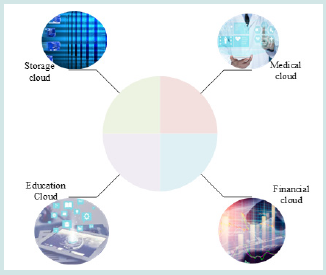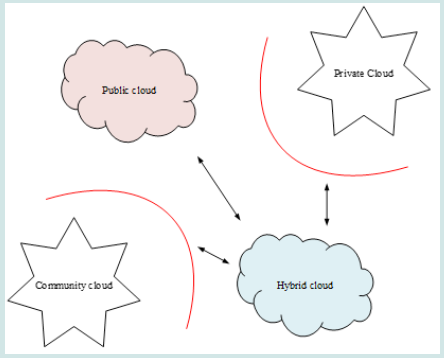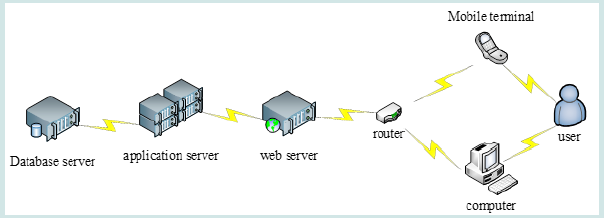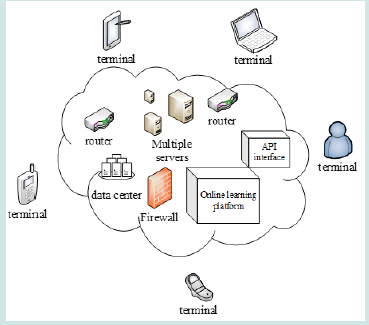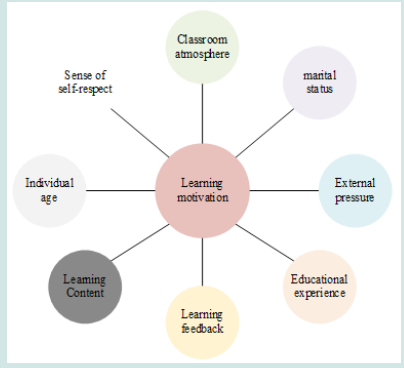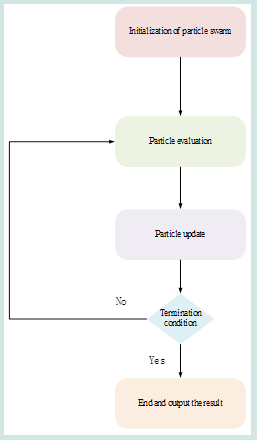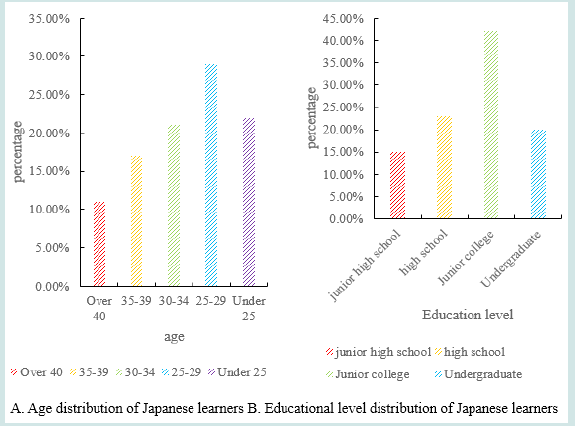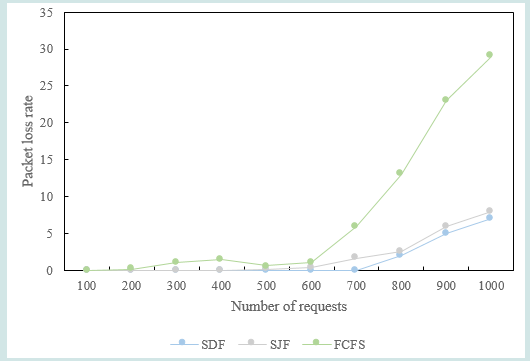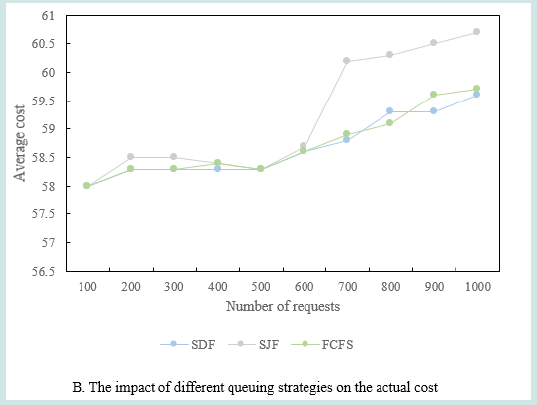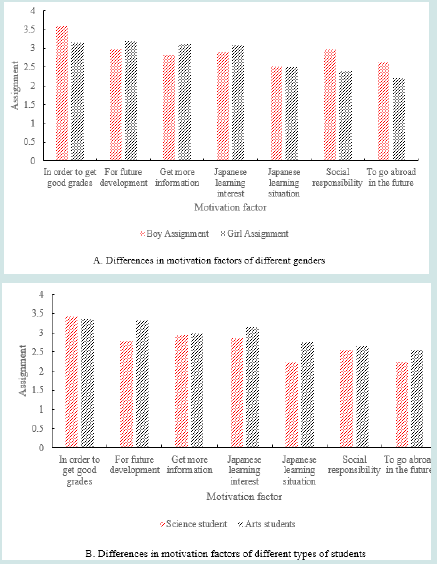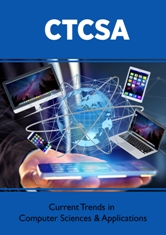
Lupine Publishers Group
Lupine Publishers
Menu
ISSN: 2643-6744
Research ArticleOpen Access
The Evolving Strategy of Stimulating Japanese Online Learning Motivation in the Intelligent Cloud Computing Environment Volume 3 - Issue 1
Changsheng Liu*
- School of Foreign Studies, Anhui Sanlian University, Hefei, Anhui, China
Received: July 25, 2023; Published: July 31, 2023
*Corresponding author:Changsheng Liu, School of Foreign Studies, Anhui Sanlian University, Hefei, Anhui, China
Email id: liucs907@mail.slu.edu.cn,
wDOI: 10.32474/CTCSA.2023.03.000152
Abstract
- Abstract
- Introduction
- Japanese Online Learning Method Based on Cloud Computing
- Virtualization Technology
- Cloud computing business interface
- Online learning platform architecture based on cloud computing.
- Investigation And Experiment of Japanese Online Learning Motivation in Cloud Computing Environment
- Motivation Analysis of Japanese Online Learning Based on Cloud Computing
- Conclusion
- Acknowledgments
- References
In order to study the method of how to motivate Japanese learning, in this paper, mainly studies the evolving strategy of motivated Japanese online learning motivation based on the intelligent cloud computing environment. Therefore, this paper proposes a cloud computing network management method, and designs a cloud computing-based online Japanese online learning method according to the characteristics and main technologies of cloud computing. Then this paper optimizes the method through the predictive analysis of support vector regression machine, and finally combines the learning motivation theory to develop a cloud computing-based Japanese online network to stimulate learning motivation strategy. This paper also designs the influence factors experiment of Japanese learning motivation, the influence experiment of queuing strategy in scheduling algorithm and the analysis of the difference of each motivation type to optimize the motivation strategy. Finally, this article conducts a comparative experiment before and after the experiment on 100 students. The experimental results show that the Japanese online network based on cloud computing to stimulate learning motivation strategies can increase students’ interest in learning Japanese by 14.31%, and it can also increase the learning efficiency of students by 14.34% in Japanese learning.
Keywords: Cloud Computing; Japanese Learning; Online Learning; the Evolution of Learning Motivation
Introduction
- Abstract
- Introduction
- Japanese Online Learning Method Based on Cloud Computing
- Virtualization Technology
- Cloud computing business interface
- Online learning platform architecture based on cloud computing.
- Investigation And Experiment of Japanese Online Learning Motivation in Cloud Computing Environment
- Motivation Analysis of Japanese Online Learning Based on Cloud Computing
- Conclusion
- Acknowledgments
- References
As a commercialized resource usage and service model, cloud computing has been increasingly applied to all walks of life. Based on virtualization technology, it breaks the coupling relationship between the underlying resources and the upper-level services, allowing users to use various services on-demand at any location and using various terminals through the network. However, when faced with large-scale task requests, the traditional single virtual machine deployment method is used to perform tasks, and its deployment efficiency and resource utilization are very low. And deploying virtual machines through clusters can not only solve this problem, but also reduce energy consumption by reducing the use of physical hosts. With the popularity of building learning society and career education, the research on Japanese majors’ learning motivation has also attracted more and more attention. In this paper, learners with a certain level of Japanese, including undergraduate Japanese major learners are selected as research objects. Based on the related theories and the status quo of learning motivation, the paper analyzes the influencing factors of Japanese learners’ learning motivation in the cloud computing environment.
With the increasing importance of images in people's daily lives, Content-Based Image Retrieval (CBIR) has been extensively studied. Xia Z proposed a solution that supports CBIR on encrypted images without leaking sensitive information to cloud servers [1]. Its research is the information protection capability of cloud servers, but it is insufficient in network learning. Mobile users usually have a high demand for localized and location-based information services. Deng R studied the trade-off between power consumption and transmission delay in fog cloud computing systems. He formulated a workload distribution problem, which suggests that the best workload distribution between fog and cloud is to target the minimum power consumption with constrained service delay [2]. His research on cloud computing focuses on the foggy cloud computing system, which is slightly inadequate in Japanese learning. In order to investigate the application of 3D virtual visual learning, Yamazaki K research investigated the instantiation of Japanese learning courses based on 3D virtual world in the context of Japanese as a Foreign Language (JFL) classroom [3]. The Japanese teaching method he studied is mainly based on VR, which is not complete in terms of cloud computing. In order to study the teaching methods of spoken Japanese, Asadchih O's research elaborated on the experimental characteristics of introducing mixed spoken Japanese teaching methods for future linguists, and the adequacy of the experimental methods, aiming to test the hypothesis of this research [4]. The focus of his research is on oral teaching, and it is not comprehensive in terms of cloud computing. In order to study the application of online learning, Yang solved the problem of tagger selection in an online learning framework. From this it estimates the quality of the labeling results of a set of specific taggers, so that the learning algorithm learns to use the most effective combination of taggers over time [5].
He mainly researches the problem of tagger selection in online learning framework, but the application of cloud computing is not deep enough. In order to study the influence of learning motivation on students' Japanese reading and listening, Mun-Hong investigated the relationship between Korean college students' Japanese reading and listening level and their learning motivation, awareness of learning strategies and self-efficacy beliefs [6]. His research is mainly on the motivation of Japanese learning. If it need can further study Japanese learning, it will be closer to the subject of this article. Cloud computing is rapidly gaining attention in business. Bruin B D analyzed the information responsibilities of hosting companies that own and operate cloud computing data centers [7]. It mainly studies the company's operation of cloud computing data centers, mainly based on an overview of theoretical knowledge, without designing experiments. Data sharing has become an attractive service provided by cloud computing platforms due to its convenience and economy. Jin L proposed a new attribute-based data sharing scheme to solve this challenging problem, which is suitable for mobile users with limited resources in cloud computing [8]. Jin L's research on cloud computing is relatively in-depth. If it can be applied to Japanese learning, it will be more in line with the purpose of this article. The innovation of this article lies in: combining the characteristics of cloud computing, analyzing the main technologies of cloud computing, choosing the network management characteristics of cloud computing, and designing an online online Japanese learning method based on cloud computing. Then this paper combines the predictive analysis of support vector regression machine to optimize the online Japanese learning method based on cloud computing. Finally, this paper combines the theory of learning motivation to design a cloud computing-based motivational strategy for Japanese online learning.
Japanese Online Learning Method Based on Cloud Computing
- Abstract
- Introduction
- Japanese Online Learning Method Based on Cloud Computing
- Virtualization Technology
- Cloud computing business interface
- Online learning platform architecture based on cloud computing.
- Investigation And Experiment of Japanese Online Learning Motivation in Cloud Computing Environment
- Motivation Analysis of Japanese Online Learning Based on Cloud Computing
- Conclusion
- Acknowledgments
- References
Online e-learning Based on Cloud Computing
Cloud computing [9] is distributed computing, network computing, and parallel computing. This is a method of providing integrated and developed information resources based on traditional computing technologies such as utility calculations, which can effectively integrate dynamic and different types of information resources through the Internet and provide them to users as services. Figure 1 shows the application of cloud computing.
Features of cloud computing
As a new type of Internet technology based on business purposes, cloud computing has the following important features:
a) Very large scale. Most cloud computing centers have a considerable scale.
b) Higher reliability. Cloud computing uses distributed data centers to back up data to separate database hosts located in different locations.
c) It can cope with a large amount of visits. In the cloud computing environment, the server cluster and virtualization technology of cloud storage are used to temporarily call computing resources and storage resources and allocate them to servers and storage sub-modules.
d) The hardware can be provided to users as a service. Cloud computing integrates hardware resources and provides them to users after virtualization processing.
The main technology of cloud computing
Cloud computing technology [10]. is a combination of multiple technologies. Users can obtain various resources such as data, calculations and even computer infrastructure services that they want through the network. These resources may be distributed all over the world. Users do not need to care about the location of these resources or the maintenance of the resources, they only need to pay attention to their own needs.
Virtualization technology [11]. Virtualization technology is to provide services that real physical hardware can provide in a virtual environment, that is, to provide a complete set of physical hardware. Virtualization technology greatly reduces the closeness between the original hardware and software, and it is no longer a physical hardware that can only run one operating system (or several). It enables one physical hardware to virtualize dozens or even hundreds of independent virtual hardware environments, which greatly improves the utilization of physical hardware environments. Distributed computing [12]. The concept of distributed computing is to decompose a large and complex problem into many relatively easy and smaller problems. Then it assigns these small problems to idle computers in different regions for processing, and then sends the processed results to a computer and aggregates them to get the final result. The advantage of distributed computing is that different computers in different regions can be connected to deal with a problem together, which can greatly improve the overall computer hardware utilization. Distributed storage [13]. Distributed storage refers to the integration of a large number of idle storage resources from all over the world to form an aggregate with a large storage capacity. It can provide a large number of data storage services for more users, and then use certain security verification methods to maintain data security. At the same time, distributed storage also needs to ensure that it has excellent data processing, throughput, transmission capabilities and other characteristics to ensure that a large number of users send requests at the same time.
Cloud monitoring technology [14]. Cloud monitoring technology is mainly a technology that guarantees cloud security. Because cloud services require centralized management of many virtual hardware resources, we must do best to reduce the probability of problems to ensure the safe and stable operation of the entire cloud platform. Cloud monitoring technology is to monitor the cloud platform, which can be further divided into internal monitoring method and external monitoring method.
Types and frameworks of cloud computing
From the perspective of the cloud computing infrastructure configuration community, cloud computing can be divided into private cloud, community cloud, public cloud, and hybrid cloud.
a) Private cloud computing service: The cloud computing service is only allowed to be used by one user, and allows complete protection of external information, or only through limited interfaces.
b) Community cloud: Cloud computing infrastructure is built and used separately for specific units but focuses on community services. User groups are targeted at community groups and provide services for community safety.
c) Public cloud: In theory, anyone can use cloud computing services. The infrastructure belongs to the cloud service provider, and all individuals or organizations that need cloud services can become cloud service customers.
d) Hybrid cloud: Cloud service infrastructure is achieved through the combination of the two or more cloud service infrastructures, which are logically independent and functionally superimposed. It has data between cloud computing with different infrastructure configuration structures.
Figure 2 shows the classification of cloud computing deployment structures and their relationships.
Network management characteristics based on cloud computing.
Cloud computing is a new computing model, which has developed from distributed computing to parallel computing to grid computing. It has unique advantages in data management:
Virtualization Technology
- Abstract
- Introduction
- Japanese Online Learning Method Based on Cloud Computing
- Virtualization Technology
- Cloud computing business interface
- Online learning platform architecture based on cloud computing.
- Investigation And Experiment of Japanese Online Learning Motivation in Cloud Computing Environment
- Motivation Analysis of Japanese Online Learning Based on Cloud Computing
- Conclusion
- Acknowledgments
- References
Virtualization is a method of physically abstracting computing resources, software resources, storage resources, and system resources on an infrastructure. This kind of resource abstraction method is not restricted by the geographic location and physical related composition of infrastructure resources. The important goal of using virtualization is to simplify the management, access, and display of IT resources by infrastructure, systems, and software, and to provide a standard interface for its resources to accept input and output. Through the use of virtualization technology, the enrichment of multiple resources, the integration of resources, and the separation of software and hardware can be realized. It has the following advantages.
a) Flexible expansion: Flexible expansion of the virtual machine to a physical location, while copying the image of the virtual machine to the corresponding physical node.
b) Reduce energy consumption: The load nodes of the virtual machine are integrated into the same physical node, and the physical nodes in the idle state will be cut off, thereby reducing energy consumption.
c) Automatic ship position retention: Through virtualization, the management of the cloud center can be dynamically configured to the physical nodes, and the conversion process is flexible without staying on the virtual machine.
d) Load distribution: In order to transfer virtual machines to different physical nodes, the virtual environment is also transferred, and finally load distribution is achieved.
1. Data management technology
Cloud computing stores a large amount of data, and after reading it, a large amount of analysis can be performed. Therefore, data management technology [15] must effectively manage large amounts of data.
2. Management and scheduling of virtual resources
Integrating physical layer resources into a "resource pool" is a function of cloud computing technology that is different from the virtualization technology of a single machine. The scheduling of resource pools is achieved through management middleware. Resource scheduling is performed in a specific environment according to resource usage rules.
Cloud computing business interface
- Abstract
- Introduction
- Japanese Online Learning Method Based on Cloud Computing
- Virtualization Technology
- Cloud computing business interface
- Online learning platform architecture based on cloud computing.
- Investigation And Experiment of Japanese Online Learning Motivation in Cloud Computing Environment
- Motivation Analysis of Japanese Online Learning Based on Cloud Computing
- Conclusion
- Acknowledgments
- References
Cloud computing provides users with unified interface services, and users will transform from traditional information technology systems to cloud computing environments. The business interface realizes the user's business transfer between the cloud and the cloud and brings convenience to the user's business transfer to the cloud. The cloud computing business development model characterized by SOA and Web Service is the main line of its development.
Online learning platform architecture based on cloud computing.
- Abstract
- Introduction
- Japanese Online Learning Method Based on Cloud Computing
- Virtualization Technology
- Cloud computing business interface
- Online learning platform architecture based on cloud computing.
- Investigation And Experiment of Japanese Online Learning Motivation in Cloud Computing Environment
- Motivation Analysis of Japanese Online Learning Based on Cloud Computing
- Conclusion
- Acknowledgments
- References
Many educational institutions now use Internet technology and apply some of them to the learning system to improve the learning process. However, many online learning systems use the B/S architecture model [16], as shown in Figure 3. In the traditional online learning mode system structure, the WEB service layer provides users with the interface of the online learning platform and uses the online learning system and operating system to provide users with necessary information and prompts. The service layer uses the server to provide users with corresponding data search, etc., and provides the entire online learning system, that is, information related to the data service layer. The cloud computing platform [17] builds an information highway between information islands, integrating storage systems, storage management, and resource data, as shown in Figure 4. Using this online learning platform model, educational institutions can access the platform through a browser, and the services provided by the platform can access data at any time and can share data storage and network bandwidth with other users on the platform. It is mainly reflected in the following aspects:
a) It provides an infrastructure service platform including memory, bandwidth, and interconnection equipment. It manages basic equipment, provides super processing power and sufficient data storage capacity, high-speed bandwidth, and data communication.
b) The cloud computing platform has a large-capacity storage capacity that can integrate rich learning materials into cloud storage to realize resource sharing. Users can use the cloud computing platform to provide API interfaces to use all data stored in cloud computing.
c) The online learning system is an online learning environment developed using API on the cloud platform, and all end users use a unified online learning and communication interface. Therefore, the education department cannot pay attention to resource acquisition methods and data processing methods.
d) The learning materials are stored at the end, and the corresponding service provider is responsible for the speed of the data sending process, the sending method, the encryption and decryption methods and other data sending methods. The user unit or individual no longer needs to invest funds to maintain information resources.
Strategies for the Evolution of Japanese Learning Motivation
Learning motivation is an individual’s inner motivation or inner psychological process, guided, motivated, and maintained by the learning object or goal. In other words, learning as a motivation for internal psychological processes cannot be directly observed by the outside world, but the outside world can be speculated through personal external actions. Learning motivation generally consists of two elements: learning needs and learning expectations, the interaction between the two forms of learning. Studying the factors that affect learning motivation is an important part of understanding the development law of learning motivation and cultivating and stimulating learning motivation. Many scholars at home and abroad say that learning enthusiasm is closely related to personal characteristics, and to a certain extent is affected by the external environment. Personal characteristics mainly include age, education, marriage experience, self-esteem, gender, social class, place of residence, nationality, etc. Among them, the first four characteristics have a particularly significant impact on adults' learning enthusiasm. The influence of external environmental factors is mainly manifested in four aspects: external pressure, learning content, classroom atmosphere, and learning feedback (Refer to Figure 5).
Language learning motivation [18] is a powerful motivation that stimulates individuals to carry out learning activities, determine the direction of learning, and guide, regulate, maintain, strengthen learning activities, and guide students to learn. To put it vividly, motivation is like the engine and steering wheel of a car. Motivation provides power for learners' activities and at the same time regulates the direction of individual activities. Japanese learning motivation includes the following two basic components. Learning needs and drive: Learning needs refers to a kind of psychological tendency of an individual to pursue achievement. It is a state in which the individual feels that there is a lack in the process of learning and life and wants to be satisfied. When the learner's learning needs are not met, the internal driving force of learning will be generated, prompting the learners to adopt learning activities that meet the learning needs. If the learner's learning needs are met, the driving force of learning will decrease accordingly, and the learning motivation of students will also decline. It can be seen that need and drive are basically synonymous, and learning needs is the drive of learning in terms of its function. Learning expectations and motivational learning expectations refer to the learners' subjective estimation of the goals achieved by the learning activities and are the responses to the learning goals in the learners' minds. Encouragement refers to the stimulus or object that can cause the state required by the organism and meet the needs of the organism. According to various properties, inducements can be divided into positive inducements and negative inducements. The former is the goal of personal inclination such as food, water, remuneration, evaluation, and status, while the latter is the goal of personal avoidance such as danger, disaster, and punishment. Motivation strategy [19] refers to the adoption of a series of educational and teaching methods and measures in the classroom teaching and in the work of educating students, for students who are not ideal and give up on their own, and students who are not interested in learning. It stimulates students' learning motivation and makes the effect and quality of students' learning behavior obvious. At the same time, effective maintenance measures are adopted for students who already have a certain learning motivation to maintain the current learning motivation, to stimulate the next round of learning behavior.
Predictive Analysis Based on Support Vector Regression Machine
Support vector regression machine (SVR) [20] is an extension of support vector machine, which is mainly used in regression algorithms and has a strong ability to deal with nonlinear regression problems. It uses the support vector regression machine to directly model and predict the network traffic sequence. At the same time, it uses the kernel function to project nonlinear problems onto high-dimensional linear problems, reducing the complexity of the algorithm. Choosing different kernel functions, the results of the algorithm will be greatly different. For the input data set is the input value, bi is the corresponding predicted value, i=1, 2,…, I. Among them, I represent the number of data samples. The basic idea of the SVM regression algorithm is to map the non-linear time series model θ of network service test historical data to move to a higher position and construct a linear regression process in the vector space T. The expression is as follows:

In the Formula ω is the autoregressive coefficient, which represents the weighted value of the approximate hyperplane in the high-order original space, and y is the deviation vector. The function f(a) is determined by training the parameters w and y of the usual function of risk minimization:

Among them,

Here ε () is a dull loss function. Z is a penalty coefficient, used to balance the experience risk and trust range, and minimize the risk. The problem of finding the best hyperplane is transformed into a quadratic planning problem.

Among them, w ∈ Rn, y ∈ R. φ is a mapping generated by mapping input data from a low-dimensional nonlinear regression problem to a high-dimensional feature space to a linear problem. ε and ε* are non-negative line variables. The multipliers xi and xi* of Langra’s day transform the Formula into a two-pair problem.
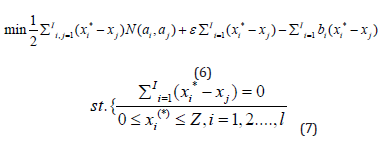
Among them, N (ai, aj) is the kernel function, and the solution result of the dual problem depends on the kernel function N (ai, aj) (i=1,2,….,I) and the constant Z. The final form of the regression function f(a) is:

In the Formula, N (ai, aj) is the kernel function.
Forecast Improvement Based on Particle Swarm Optimization Algorithm
The particle swarm optimization algorithm (PSO) [21] has successful applications in multi-objective optimization, automatic object detection, and image processing. And it is a heuristic random optimization algorithm with strong global search ability and global optimization characteristics. The particle swarm optimization algorithm adopts the form of iterative recursion to simulate the intelligent optimization of the swarm. Set in the D-dimensional search space, there are k particles flying at a certain speed to form the population N= {a1, a2,… ,ak}. In the process of each particle's flight search, considering the historical optimal value searched by itself and the historical optimal value searched by other particles in the group, and then change the position on this basis. Suppose the state attributes of the i-th particle are as follows.
Current position, that is, the position at time t.

The historical optimal position, that is, the optimal position of the individual at time t.

Speed, that is, the speed at time t.

In the Formula, i=1,2,…,k. The current position point is recorded as a set of coordinates describing the space point and in each iteration of the algorithm, the current point ai will be used as the problem solution. If the current point is better than the historical best point qi, then the coordinates of the target point exist in the second vector qi. In the Formula, i=1,2,…,k. The current position point is recorded as a set of coordinates indicating a point in space, and in each iteration of the algorithm, the current point ai is used as a method to solve the problem. The current point is the best point qi in the past, and the coordinates of the target point are the second vector qi. The best position searched so far in the entire particle swarm, that is, the global optimal position at time t.


In the Formula, s ∈ [1, S], I ∈ [1, k], r1 and r2 are uniformly distributed random numbers on the interval (0,1), z1 and z2 are called learning factors, usually z1=z2=2. The basic process of its particle swarm optimization algorithm is shown in Figure 6 In each iteration, the Pibest and Gbest of the particle trace will change according to the position and velocity at the current moment, which is also determined by the situation of the particle at the previous moment. Its iterative Formula is:

In the Formula, V(N) and V(N+1) respectively represent the speed at the current time and the next time, and A(N) and A(N+1) represent the position at the current time and the next time respectively. Rand () represents a random number between (0,1). z1 and z2 are impact factors, and their value is usually 2. ω represents the weighting factor, and its value will automatically decrease as the iterative process progresses, thereby accelerating the speed of convergence.

In the Formula, ωmin, ωmax represent the minimum and maximum weighted values. Iter represents the current number of iterations, and itermax represents the total number of iterations. In SVR's sample data set {ai, bj} (i=1,2,…,k; ai ∈ Rd; bi ∈ R), the regression function is:

In the Formula, and xi are Lagrangian multipliers, y* is the threshold, and the kernel function is the RBF kernel function:

For SVR based on particle swarm optimization algorithm, the speed and position of each particle are usually determined by the three parameters (ε,z,γ). The fitting function is generally MSE (mean square error) that affects the SVR regression performance. The fitting function is as follows:

In the Formula, k is the training sample, b is the actual value, and bi is the predicted value.
Investigation And Experiment of Japanese Online Learning Motivation in Cloud Computing Environment
- Abstract
- Introduction
- Japanese Online Learning Method Based on Cloud Computing
- Virtualization Technology
- Cloud computing business interface
- Online learning platform architecture based on cloud computing.
- Investigation And Experiment of Japanese Online Learning Motivation in Cloud Computing Environment
- Motivation Analysis of Japanese Online Learning Based on Cloud Computing
- Conclusion
- Acknowledgments
- References
Investigation and Experiment of Factors Affecting Japanese Learning Motivation
Many studies believe that age is the main factor affecting adult learning motivation. First, age affects the participation of adult learners, that is, the intensity of motivation. Please refer to Figure 7. Judging from the age distribution and education of the learners, they are concentrated between 25 and 29 years old. As the age increases, the number of participants tends to decrease. Most people at this age are still studying in full-time schools. The influence of the individual’s original school education experience on the learning enthusiasm of adulthood is manifested in two aspects. First, it is the intensity of motivation. In other words, the longer an individual’s original education years, the higher the success rate of education, the higher the probability of participating in education, and the higher the motivation. According to the survey, the education level of the learners is mainly university education, and those who have obtained a bachelor's degree generally think that their current academic qualifications can basically meet the needs of the current job. Second, it affects the direction of learning motivation. Regarding the relationship between education level and motivation direction, scholars generally believe that people with low education level have high levels of professional ability development, external expectations, and educational relief. People with a high level of education may have cognitive care, social welfare, and social interaction.
In order to investigate the factors that affect Japanese learning motivation more carefully, this article also collected the influence of age, education, marriage, sense of self-respect and external pressure on the motivation of Japanese learning. Details are shown in Tables 1- 5. The motivation of young people is biased towards the pursuit of practicability, academic qualifications and graduation certificates to establish the foundation for future work. The interest of middle-aged people lies in the improvement of their careers and the maintenance of their families. The elderly can satisfy their concerns about knowledge and use. The proportion of unmarried adult learners' avoidance and stimulating learning desire is much higher than that of married learners. The reason may be that unmarried people are generally relatively young, just start working, and while focusing on their careers, their lives are relatively monotonous, and they tend to feel lonely and lonely, and they are easy to participate in education. They seek to escape excitement and friendship. They are influenced by their spouse’s participation in learning, and they are highly likely to be supported and encouraged. Therefore, as a motivational direction, they often accept outside expectations. People with strong self-esteem show trust in themselves and show a positive attitude towards themselves. In order to affirm their abilities and values, they will automatically participate in educational activities. The desire to learn is based on cognitive care. People with low self-esteem lack self-confidence in themselves, hold a negative attitude towards things, and passively participate in educational activities. Learning motivation is mainly avoidance or stimulation, external expectations and professional progress. With the rapid development of today's society, people's requirements for quality are getting higher and higher, and the competition is getting more and more fierce.
The Influence of Queuing Strategy in Scheduling Algorithm
The queuing model in the batch queue also has a great influence on the resource allocation strategy. This experiment selects three different queuing strategies, namely first come first served (FCFS), shortest job first (SJF) and lowest deadline first (SDF). The experiment verified the impact of three different queuing strategies on the packet loss rate and actual overhead. The experimental results are shown in Figure 8. It can be seen from the experimental results that the shortest assignment priority strategy has the best effect, but the lowest deadline priority strategy also performs well. The effect of queuing strategy on cost is not much different. Because the queuing strategy of video stream transcoding will only affect the packet loss rate of transcoding, it will hardly affect the transcoding time, so it will not affect the cost of renting cloud transcoding nodes.
Motivation Analysis of Japanese Online Learning Based on Cloud Computing
- Abstract
- Introduction
- Japanese Online Learning Method Based on Cloud Computing
- Virtualization Technology
- Cloud computing business interface
- Online learning platform architecture based on cloud computing.
- Investigation And Experiment of Japanese Online Learning Motivation in Cloud Computing Environment
- Motivation Analysis of Japanese Online Learning Based on Cloud Computing
- Conclusion
- Acknowledgments
- References
The Difference of Each Motivation Type
In this study, in order to study the recognition of different types of students on the seven motivational factors, the students were taken as independent variables and the seven factors as dependent variables were analyzed. The result is shown in Figure 9. It can be seen from the figure that there are certain differences between boys and girls in various data. Both boys and girls learn Japanese for the purpose of achieving good grades. But the boys behave more strongly. Their main purpose of learning Japanese is to pass the exam, especially to get a good score in the college entrance examination. Girls think more long-term, they agree with the motivation of "for future development", and they are also significantly higher than boys in terms of "getting more information" and "interest in Japanese learning". In the item of "going abroad for the future", boys are significantly higher than girls. In terms of "social responsibility", boys also perform well. It can be seen that boys have a broader vision, and it can also be seen that they have shown enterprising spirit. In the comparison between liberal arts and science, it is found that the Japanese learning motivation of liberal arts classes is generally higher than that of science classes, especially in terms of interest in learning and for future personal development. For the item of going abroad, the performance of liberal arts classes is also stronger than that of science classes, which also shows that their desire to understand foreign cultures is stronger. In the two options of "Learning More Information" and "Social Responsibility", the performance of liberal arts class and science class are relatively close, while students of liberal arts class are more interested in Japanese learning.
Figure 10: B: The status of students’ Japanese learning efficiency before and after the experiment Figure 10: Students’ learning status of Japanese learning before and after the experiment.

Motivation for Japanese Online Learning Based on Cloud Computing
By designing an online Japanese learning platform based on cloud computing, students are motivated to learn Japanese. In order to verify the learning efficiency and learning interest of the students in Japanese learning under this strategy, this article recorded the learning status of the students before implementing the cloud computing-based Japanese motivational strategy for 100 students. Then it compares the learning status of the students after learning, and the collected data randomly selects 10 groups as comparison records, as shown in Figure 10. Figure 10 Students' learning status of Japanese learning before and after the experiment It can be seen from the figure that the students' interest in Japanese learning was only 74.08% before the experiment. After the Japanese online network based on cloud computing to stimulate learning motivation strategies, students' interest in Japanese learning reached 88.39%, an increase of 14.31%. Before the experiment, the students' learning efficiency of Japanese learning was only 75.83%. After stimulating the learning motivation strategy through the Japanese online network based on cloud computing, the learning efficiency of the students in Japanese learning reached 90.17%, an increase of 14.34%. This shows that the strategy of stimulating learning motivation based on the Japanese online network of cloud computing can significantly improve students' interest in Japanese learning and learning efficiency.
Conclusion
- Abstract
- Introduction
- Japanese Online Learning Method Based on Cloud Computing
- Virtualization Technology
- Cloud computing business interface
- Online learning platform architecture based on cloud computing.
- Investigation And Experiment of Japanese Online Learning Motivation in Cloud Computing Environment
- Motivation Analysis of Japanese Online Learning Based on Cloud Computing
- Conclusion
- Acknowledgments
- References
This article mainly studies the design of an online Japanese online learning method in the cloud computing environment to stimulate students' motivation to learn Japanese. Therefore, this paper combines the characteristics of cloud computing and its main technology, chooses cloud computing network management, and designs an online online Japanese learning method based on cloud computing. Then this paper combines the predictive analysis of support vector regression machine to optimize the cloud computing-based online online Japanese learning method, and finally combines the learning motivation theory to design a cloud computing-based motivational strategy for Japanese online learning. In order to study the influencing factors of students' learning motivation in Japanese learning, this paper designs an investigation experiment. The data collected in the experiment is analyzed to get its influencing factors. Then in order to test the queuing strategy of the scheduling algorithm, this paper designs an experiment on the influence of the queuing strategy in the scheduling algorithm, and then analyzes the difference of each motivation type. It optimized the results of the experiment on the Japanese online network based on cloud computing to stimulate learning motivation strategies. Finally, this article verifies the role of the motivational stimulating strategy of this article by using the learning interest and learning efficiency of 100 students before and after using the stimulating strategy. The experimental results show that the Japanese online network based on cloud computing to stimulate learning motivation strategy can effectively improve students' interest in Japanese learning and learning efficiency.
Acknowledgments
- Abstract
- Introduction
- Japanese Online Learning Method Based on Cloud Computing
- Virtualization Technology
- Cloud computing business interface
- Online learning platform architecture based on cloud computing.
- Investigation And Experiment of Japanese Online Learning Motivation in Cloud Computing Environment
- Motivation Analysis of Japanese Online Learning Based on Cloud Computing
- Conclusion
- Acknowledgments
- References
This study was supported by the Science Foundation of Educational Commission of Anhui Province of China (Grant no. SK2021A0798).
References
- Abstract
- Introduction
- Japanese Online Learning Method Based on Cloud Computing
- Virtualization Technology
- Cloud computing business interface
- Online learning platform architecture based on cloud computing.
- Investigation And Experiment of Japanese Online Learning Motivation in Cloud Computing Environment
- Motivation Analysis of Japanese Online Learning Based on Cloud Computing
- Conclusion
- Acknowledgments
- References
- Xia Z, Wang X, Zhang L, Zhan Qin, Xingming Sun, et al. (2016) A Privacy-Preserving and Copy-Deterrence Content-Based Image Retrieval Scheme in Cloud Computing[J]. IEEE Transactions on Information Forensics & Security 11(11): 2594-2608.
- Deng R, Lu R, Lai C, Tom H Luan, Hao Liang (2017) Optimal Workload Allocation in Fog-Cloud Computing Toward Balanced Delay and Power Consumption[J]. IEEE Internet of Things Journal 3(6): 1171-1181.
- Yamazaki K (2018) Computer-assisted learning of communication (CALC): A case study of Japanese learning in a 3D virtual world[J]. ReCall 30(2): 214-231.
- Asadchih O, Dybska T (2020) The experimental testing of blended learning methods of oral Japanese lanuage teaching aimed at future philologists[J]. ScienceRise Pedagogical Education 3(36): 58-61.
- Yang Liu, Mingyan Liu (2017) An Online Learning Approach to Improving the Quality of Crowd- Sourcing[J]. IEEE/ACM Transactions on Networking 25(4): 2166-2179.
- Mun Hong Choe, Jiyeong (2017) Motivation, Strategy Use, and Self-efficacy Beliefs in Korean University Students. L2 English Proficiency[J]. Korea Journal of English Language and Linguistics 17(3): 519-545.
- Bruin B D, Floridi L (2017) The Ethics of Cloud Computing[J]. Science and Engineering Ethics 23(1):21-39.
- Jin L, Zhang Y, Chen X, Yang Xiang (2018) Secure attribute-based data sharing for resource-limited users in cloud computing[J]. Computers & Security, 2018, 72(1): 1-12.
- Xiao S, Xie X, Wen S, Zhigang Zeng, Tingwen Huang, et al. (2017) GST-Memristor-Based Online Learning Neural Networks[J]. Neurocomputing 272(10): 677-682.
- Leonidou C N, Skarmeas D (2017) Gray Shades of Green: Causes and Consequences of Green Skepticism[J]. Journal of Business Ethics 144(2): 401-415.
- Hirai T, Masuyyama H, Kasahara S, Yutaka Takahashi (2017) Performance analysis of large-scale parallel-distributed processing with backup tasks for cloud computing[J]. Journal of Industrial & Management Optimization 10(1): 113-129.
- Ling J, Shen S, Li J, Xijun Liang, Lei Li (2017) Budget Online Learning Algorithm for Least Squares SVM[J]. IEEE Transactions on Neural Networks & Learning Systems 28(9): 2076-2087.
- Jifara W, Jiang F, Zhang B , Huapeng Wang, Jinsong Li (2017) Hyperspectral image compression based on online learning spectral features dictionary[J]. Multimedia Tools & Applications 76(23): 25003-25014.
- Wei W, Fan X, Song H, Xiumei Fan, Jiachen Yang (2018) Imperfect Information Dynamic Stackelberg Game Based Resource Allocation Using Hidden Markov for Cloud Computing[J]. IEEE Transactions on Services Computing 11(1): 78-89.
- Wang S, Zhou J , Joseph K Liu, Jianping Yu, Jianyong Chen, et al. (2017) An Efficient File Hierarchy Attribute-Based Encryption Scheme in Cloud Computing[J]. IEEE Transactions on Information Forensics and Security 11(6): 1265-1277.
- Barsoum A, Hasan M A (2017) Provable Multicopy Dynamic Data Possession in Cloud Computing Systems[J]. IEEE Transactions on Information Forensics & Security 10(3): 485-497.
- Tsai J L, Lo N W (2017) A Privacy-Aware Authentication Scheme for Distributed Mobile Cloud Computing Services[J]. IEEE Systems Journal 9(3): 805-815.
- Ping L, Li J, Huang Z, Tong Li, Chong Zhi Gao, et al. (2017) multi-key privacy-preserving deep learning in cloud computing[J]. Future Generation Computer Systems 74(1): 76-85.
- Tang W, Feng W (2017) Parallel map projection of vector-based big spatial data: Coupling cloud computing with graphics processing units - ScienceDirect[J]. Computers, Environment and Urban Systems 61(1): 187-197.
- Yi H, Chan J, Alpcan T, Christopher Leckie (2017) Using Virtual Machine Allocation Policies to Defend against Co-Resident Attacks in Cloud Computing[J]. IEEE Transactions on Dependable & Secure Computing 14(1): 95-108.
- Weidlich J, Bastiaens T J (2017) Explaining social presence and the quality of online learning with the SIPS model[J]. Computers in Human Behavior 72(1): 479-487.

Top Editors
-

Mark E Smith
Bio chemistry
University of Texas Medical Branch, USA -

Lawrence A Presley
Department of Criminal Justice
Liberty University, USA -

Thomas W Miller
Department of Psychiatry
University of Kentucky, USA -

Gjumrakch Aliev
Department of Medicine
Gally International Biomedical Research & Consulting LLC, USA -

Christopher Bryant
Department of Urbanisation and Agricultural
Montreal university, USA -

Robert William Frare
Oral & Maxillofacial Pathology
New York University, USA -

Rudolph Modesto Navari
Gastroenterology and Hepatology
University of Alabama, UK -

Andrew Hague
Department of Medicine
Universities of Bradford, UK -

George Gregory Buttigieg
Maltese College of Obstetrics and Gynaecology, Europe -

Chen-Hsiung Yeh
Oncology
Circulogene Theranostics, England -
.png)
Emilio Bucio-Carrillo
Radiation Chemistry
National University of Mexico, USA -
.jpg)
Casey J Grenier
Analytical Chemistry
Wentworth Institute of Technology, USA -
Hany Atalah
Minimally Invasive Surgery
Mercer University school of Medicine, USA -

Abu-Hussein Muhamad
Pediatric Dentistry
University of Athens , Greece

The annual scholar awards from Lupine Publishers honor a selected number Read More...




